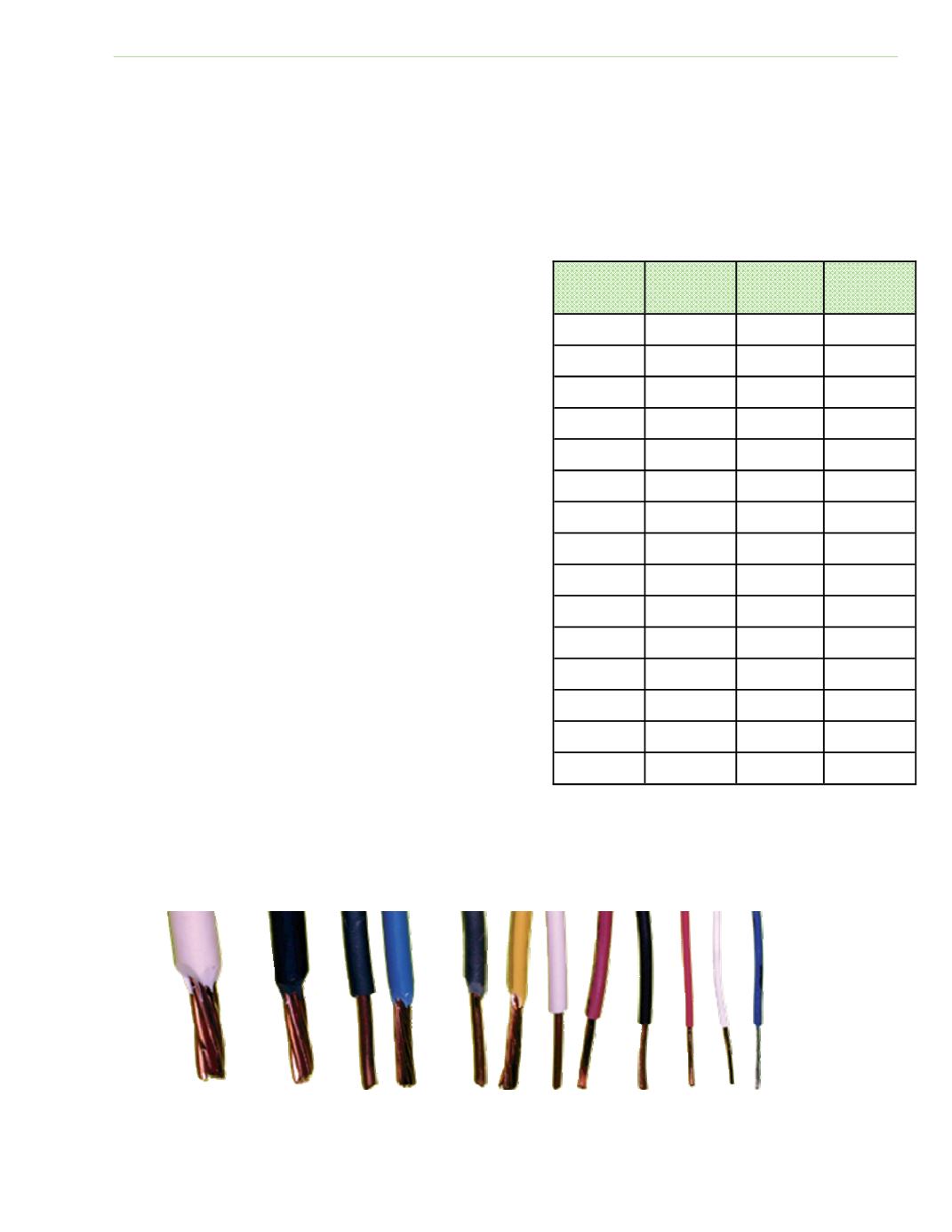

Electrical Theory & Applications for HVACR
Chapter 2: Circuits and Their Components
Page 23
require all electrical wires to be installed inside metal conduit pipes (not plasƟc). This metal‐to‐metal
pathway should be grounded by connecƟon to a grounding electrode or to the steel framework of the
building (which is grounded).
CONDUCTORS
Electrical wires are used as conductors to provide the necessary free electrons and serve as a pathway
for electron flow. These wires are used to connect devices and switches to complete an electrical
circuit. Silver, copper and aluminum are good conductors because they have high conducƟvity and
low resistance to current flow. In general, any
material that has three or less electrons in its outer
orbit, called the valance ring, is considered a good
conductor. Copper is the most commonly used
conductor. Copper has a single electron in its valance
ring.
The material’s ability to conduct electricity is referred
to as its K Factor. (ConducƟvity.)
The amount of current a conductor can safely carry
without becoming overheated is limited. This current‐
carrying ability is called ampacity. The ampacity of a
conductor depends upon the wire’s diameter, length,
locaƟon, type and quality of insulaƟon. The chart
shown in Figure 2‐8 is a parƟal list of wire sizes,
resistance, and ampacity for standard sizes of copper
and aluminum wires based on American Wire Gage
(AWG).
Consult the NaƟonal Electrical Code (NEC) book for a
complete list of up‐to‐date informaƟon. No. 12 copper
wire is probably the most commonly used wire size. It
is oŌen used when a smaller wire would be approved.
Other than cost, there is no problem with over‐sizing
a wire. Under‐sizing causes severe problems due to
overheaƟng. Figure 2‐9 illustrates a sample of various
wire sizes for both solid and stranded wires.
Fig. 2‐8: Ampacity of commercial wire
Gauge No.
(AWG)
OHMS per
1000 FEET
Ampacity
Copper
Ampacity
Aluminum
0000
0.050
230
180
000
0.062
200
155
00
0.080
175
135
0
0.100
150
120
1
0.127
130
100
2
0.159
115
90
3
0.202
100
75
4
0.254
85
65
6
0.40
65
50
8
0.645
50
40
10
1.02
30*
25
12
1.62
20*
18
14
2.57
15*
16
4.10
10*
18
6.51
5*
*Load current raƟng and over‐current protecƟon shall
NOT exceed these figures.
Fig. 2‐9: Wire size and type determines current carrying ability (ampacity)










